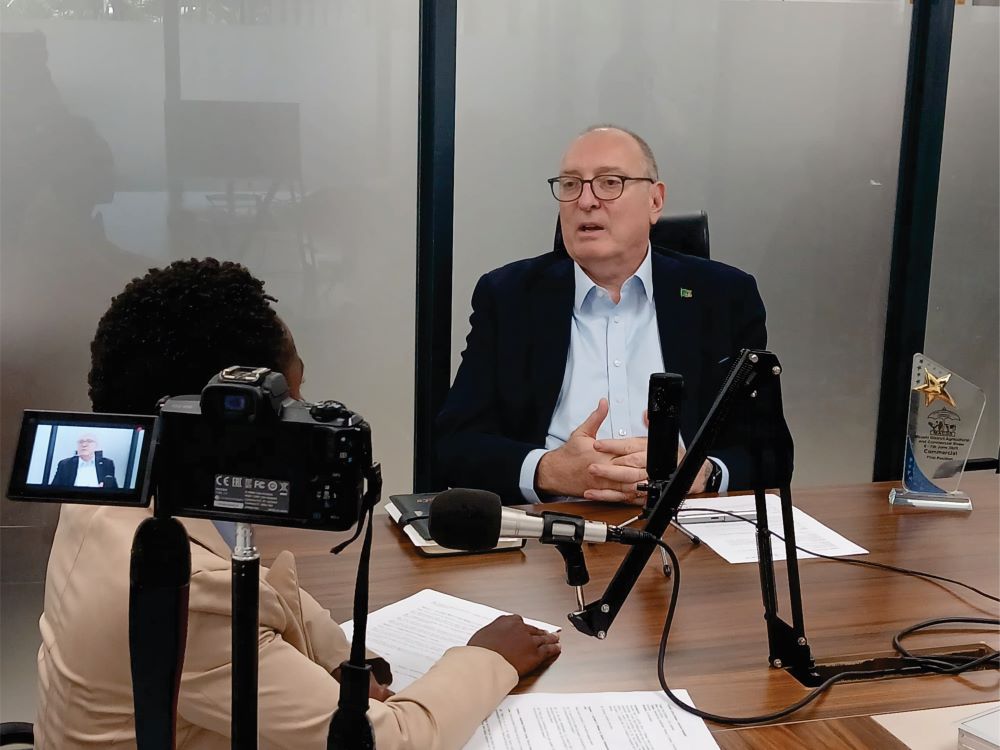
By Ruth Chileshe
In a country where small-scale farmers contribute massively to maize production, the idea of upgrading from the hoe and ox-drawn plough to machines may seem daunting, yet it’s becoming increasingly vital. Mechanization, once a domain of commercial agriculture, is now emerging as a lifeline for Zambia’s smallholder farmers grappling with climate shocks, low productivity, and outdated farming techniques.
In the traditional Zambian setup, preparing land often involves handheld hoes or oxen, methods that are laborious, time-consuming, and limit a farmer's capacity to cultivate larger plots. With the window for planting growing narrower due to erratic rainfall, timing is everything.
“Mechanized land preparation can triple the amount of land a farmer can prepare within the right timeframe,” explains Mr. Richards. “We’re talking about going from two to six hectares and that’s a gamechanger.”
AgLeaseCo offers a range of mechanized solutions tailored for smallholders, including two-wheel walking tractors for small plots and four-wheel tractors for those with up to 100 hectares. Planting, spraying, irrigation, and harvesting can all be automated, ensuring precision and consistency. According to Mr. Richards, these improvements directly boost yields, especially when crops are planted at the correct depth and spacing , something almost impossible to achieve with traditional methods.
Mechanization also plays a crucial role beyond the field. Equipment like groundnut lifters, rice harvesters, and post-harvest storage facilities help farmers preserve their crop quality and timing of sale.
“Storage is often overlooked, ”Richards says. “But it allows farmers to hold onto their produce until prices improve, rather than being forced to sell at low prices right after harvest.”
The economic logic is simple: improved efficiency, better timing, and reduced labor costs contribute to stronger incomes and more resilient livelihoods.
One of the biggest misconceptions is that mechanization is only for large-scale commercial farmers. AgLeaseCo is actively dismantling that notion by designing services specifically for smallholders. They finance only farmers cultivating between 1 and 100 hectares— the very segment often ignored by commercial lenders.
“We understand these farmers. Most of them farm on customary land without title deeds. They don’t have balance sheets or bankable business plans. That’s not a problem for us,”Mr. Richards clarifies.
He explains that instead of demanding traditional collateral, AgLeaseCo uses the financed equipment it self as security. And before financing, their teams conduct field assessments, evaluating everything from land size and input use to historical yields. This approach not only ensures sustainability but builds a database of farmer performance over time, allowing AgLeaseCo to customize its support.
While mechanization can revolutionize farming, it’s not without hurdles. Chief among them is access to water.
“Water is the silver bullet,” says Mr. Richards. “Without it, diversification is limited, and risk remains high.”
To mitigate this, he says the company supports solar-powered irrigation systems and promotes conservation agriculture techniques like ripping instead of ploughing, which helps retain soil moisture. They also engage with government and credit guarantee schemes to explore financing for boreholes, though borehole drilling itself remains risky due to the possibility of striking dry ground.
Mr. Richards notes that financing remains another barrier, especially down payments. However, with interest rates capped at 30% per annum, significantly lower than many microfinance institutions — AgLeaseCo provides one of the most affordable credit options available to small-scale farmers.
Climate change is no longer a distant threat. Droughts, floods, and erratic rainfall have pushed many farmers to migrate from drier areas in Southern and Eastern Provinces to wetter northern regions. Mr. Richards notes that some of their clients have had their entire harvests wiped out by drought or floods.
In response, he highlights that the company restructured over 250 leases last season alone, offering rescheduling instead of repossession, a lifeline many banks would not provide.
“Our goal isn’t to collect down payments and then leave farmers to return to oxen. We want them to succeed, to own these machines, and to transform their livelihoods,” Richards insists.
Asked what he’d say to a traditional farmer considering mechanization, Mr. Richards reflects: “We don’t teach farmers how to farm. They know their soils, their rains, their seasons. What we offer are tools that can help them double their yields, expand their fields, and reduce the back-breaking work they’ve been doing for generations.”
He adds that monocropping, which is growing only one crop like maize, is risky, particularly in the absence of irrigation. Diversification, supported by mechanization and water access, allows farmers to grow high-value crops year-round, raise livestock, and reduce income gaps between harvests.
With Zambia’s population growing and food security becoming a top priority, mechanization is no longer optional, it’s essential.
“It’s about productivity. It’s about sustainability. But most of all, it’s about dignity, helping farmers move from survival to surplus,” Mr. Richards concludes.
Mechanization may not be a magic wand, but for many Zambian farmers, it could be the start of a much-needed transformation, one field at a time.
